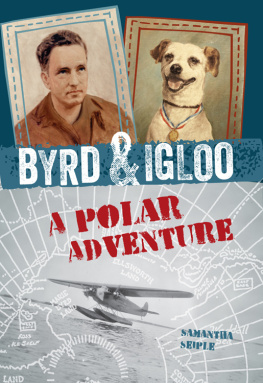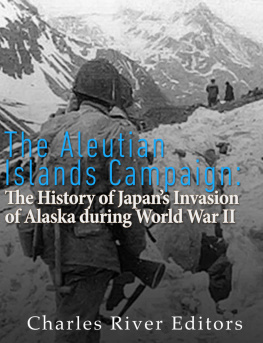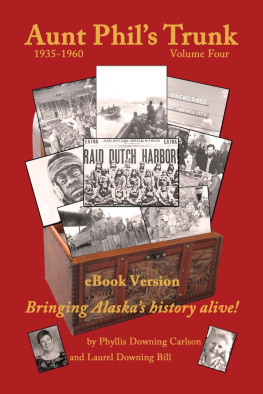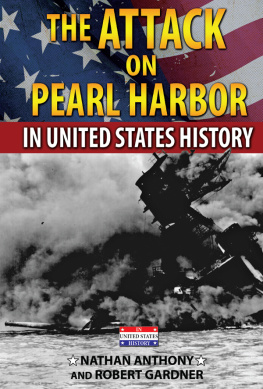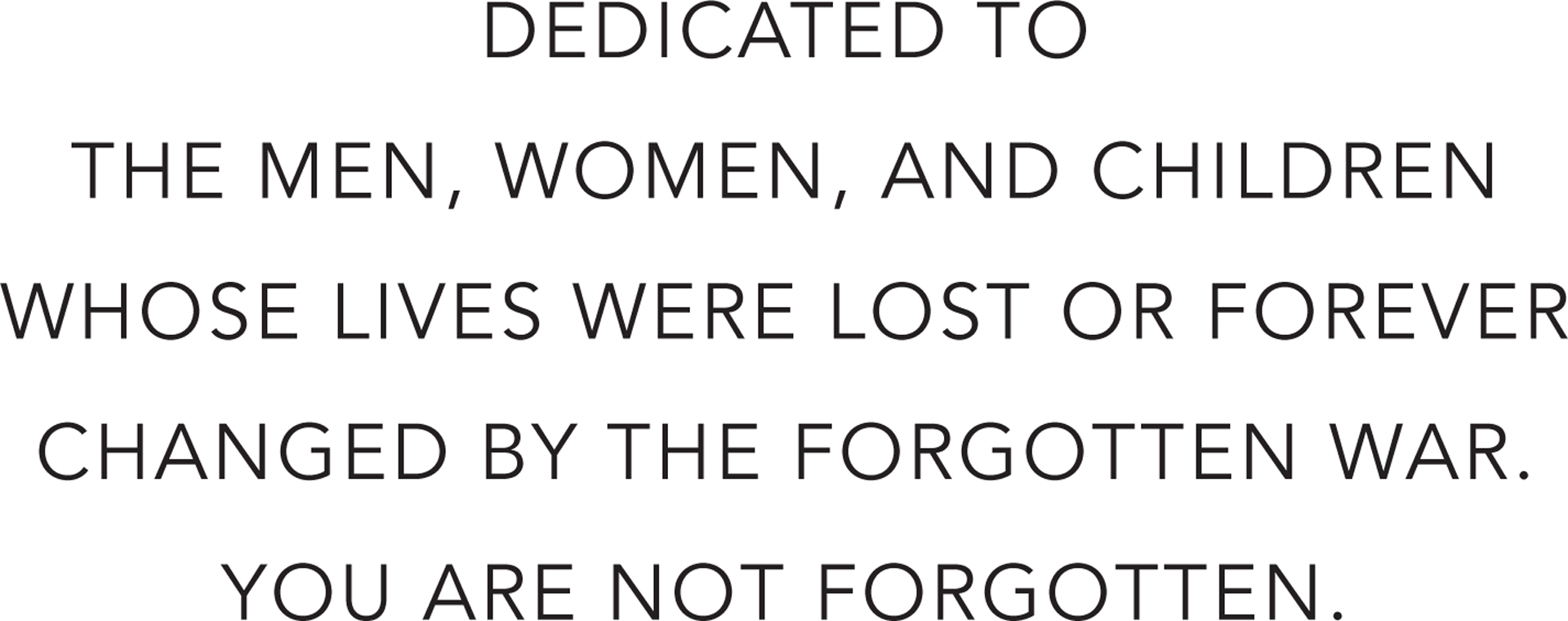ON JUNE 7, 1942, Japan invaded Alaska.
On June 10, 1942, the U.S. Navy denied that it happened: None of our inhabited islands or rocks are troubled with uninvited visitors up to this time.
The Japanese invasion and occupation of the Aleutian Islands in Alaska was shrouded in secrecy. This secrecy was not only for security reasons but also to avoid provoking a widespread panic across the United States and to avoid acknowledging the fact that the westernmost section of Alaska was now part of Japans quickly expanding empire.
Decades after World War II, the U.S. government kept the documents about the Japanese invasion of Alaska classified, and the Americans who were there when it happened didnt want to talk about it.
Because of this silence, one of the bloodiest and deadliest hand-to-hand combat battles between the United States and Japan was virtually forgotten. This is the story they didnt want you to know.

MAY 14, 1942. PEARL HARBOR, OAHU, HAWAII, FIVE MONTHS AND ONE WEEK AFTER THE JAPANESE ATTACK.
A soldier stood with a loaded gun in front of a locked steel door. He was guarding the secrets buried below from spies and thieves. No one was allowed to talk about what went on in the dungeon, and if anyone did, their life was at stake. The armed guard stopped anyone who tried to enter. If necessary, he would shoot to kill.
A tall, thin man with dark hair and glasses was facing the locked steel door. The armed guard didnt bother him. Thats because Lieutenant Commander Edwin Layton, known as Eddie to his friends, possessed the security clearance to enter. Plus, he was a regular. The soldier unlocked the door for him and stepped aside.

Lieutenant Commander Edwin Layton
Eddie rushed down the flight of stairs deep into the dungeon. He stopped when he got to the bottom and stood in front of another locked steel door. As he waited anxiously for it to open, he thought about the urgent phone call hed received earlier in the day.
Ive got something so hot here its burning the top of my desk! said Lieutenant Commander Joseph J. Rochefort.
What is it? asked Eddie.
But Joe wouldnt tell Eddie over the phone. Since Joe wasnt one to exaggerate, Eddie immediately stopped what he was doing and rushed over to meet with him.
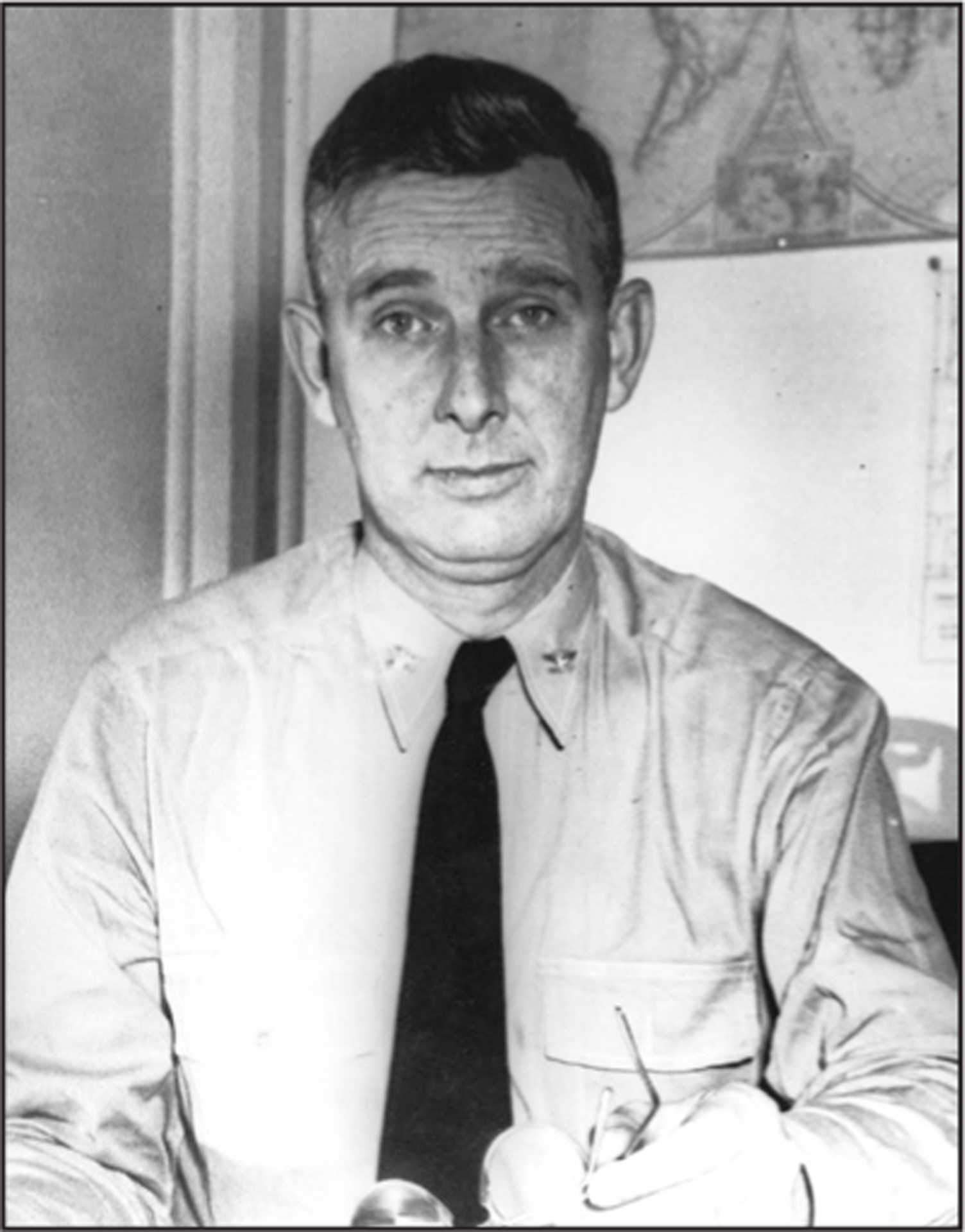
Lieutenant Commander Joseph J. Rochefort
Eddie and Joe, who were both known for their quick wit and brilliance, became lifelong friends when they met onboard a ship making its way across the Pacific to Japan in 1929. The navy had sent them to Tokyo to learn Japanese. At the time, it was rare for any American to speak Japanese, but it wasnt unusual for the Japanese to be fluent in English.
During their three years in Japan, Joe never once mentioned to Eddie that his background involved cryptography, a relatively new field involving cracking codes from intercepted messages. The navy called a cryptanalyst a cryppy.
Following his three years in Japan, Eddie would find himself back in the United States working in naval intelligence. Using his firsthand knowledge of Japan and by studying detailed maps, Eddie identified strategic targets within Japans electric power distribution network for the United States to bomb in case of war.
During this time, Eddie was also assigned to naval communications and introduced to code cracking, becoming a cryppy himself. He and Joe would cross paths again in 1936 when they were assigned to the same ship. And, five years later, on May 15, 1941, their paths crossed once more when Joe was assigned to work in the dungeon.
Joe was the head cryppy in the dungeon, located in the basement of the administration building of the Fourteenth Naval District. Being the head cryppy meant that Joe was the commander in charge of the combat intelligence unit, also called Station Hypo.
Station Hypo didnt really describe the group and this was intentional. The name was a cover to keep their work in the dungeon a secret from everyone. If the enemy ever found out who worked there and captured them, they would be tortured or even killed in an attempt to get top secret information.

Machine operators inside Station Hypo
Joe oversaw a team of one hundred cryppies, translators, typists, punch card operators, and clerks. Their top secret work involved cracking the Japanese naval traffic codes, specifically the Japanese Navy 25, or JN-25, by intercepting Japanese messages. This was no easy feat.
The navy set up listening posts in China, Guam, the Philippines, Hawaii, and Washington state. At these posts, radiomen, called roofers, wore headsets and scanned the radio airways. They were listening to intercept the Japanese Morse code messages. The roofers would translate the Japanese Morse code of dots and dashes into Japanese kana characters, which represent the phonetic sounds of the Japanese language. Any secretly coded messages were then sent over a secure cable line or delivered in person by a courier to the cryppies, who tried to convert the kana characters into English. Anything they discovered about the Japanese navys next plan of attack, Joe reported to Eddie who, in turn, informed Admiral Chester W. Nimitz.

Admiral Chester W. Nimitz
Admiral Nimitz was the commander in chief of the U.S. Pacific Fleet. He needed to know the exact location of the next Japanese attack. The situation was dire.
Since the 1930s, the Japanese had been aggressively expanding their empire, which they called the Greater East Asia Co-Prosperity Sphere. Japans main motivation was its need for resources, such as oil, rubber, tin, and nickel, for military armaments. To get these, they conquered countries rich in these resources. The Japanese leaders claimed that the resulting economic growth would bring them out of the Great Depression, an economic crash that was plaguing the world.
Although Hirohito, the emperor of Japan, was worshipped as a god, he didnt actually run the country. General Hideki Tojo, who became Japans prime minister on October 16, 1941, and other military leaders made the decisions and controlled the government.
In fact, Emperor Hirohito opposed the military leaders decisions but didnt dare voice his opinions. He feared they would turn against him General Tojo was known to assassinate anyone who stood in his way.
The Japanese military was undefeated and unstoppable. The soldiers were well trained, highly skilled, disciplined, and followed the samurai warrior code of bushido , meaning they valued honor before their lives and would fight to the death. To a Japanese soldier, it was extremely shameful to surrender, and those who did were tortured and executed.



